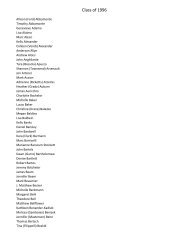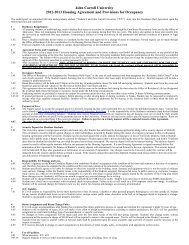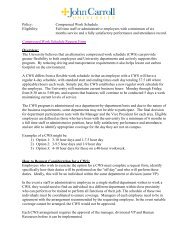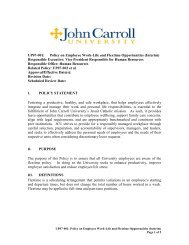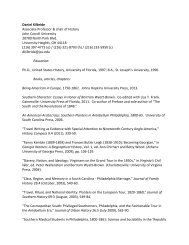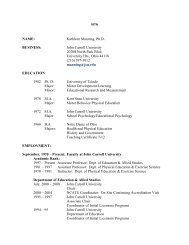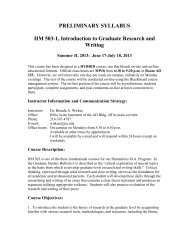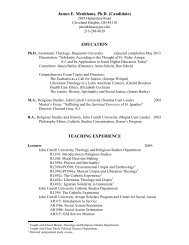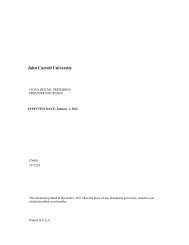Create successful ePaper yourself
Turn your PDF publications into a flip-book with our unique Google optimized e-Paper software.
Tickets for the Rajkó Concert: All JCU students and all JCU employees are eligible for one<br />
voucher per person to exchange for a free ticket at the door, the evening of the concert. There<br />
is a ticket fee for all others. Ticket vouchers may be obtained in person from Mrs. Elssy<br />
Lawrence, secretary, CMLC Department (216.397-4371), or Mrs. Kathy Schiffer, secretary,<br />
Office of Global Education (216.397.4320), Monday – Friday, 9 am – 5 pm (closed from 12- 1<br />
pm for lunch).<br />
About the Rajkó Orchestra Members: Beginning in 1952, the most musically talented Roma<br />
(Gypsy) children living in the Carpathian basin area of Europe were invited to study at the newly<br />
formed Rajkó Music School in Budapest, where starting at the age of 8 and graduating at about<br />
18-19, they learn to become professional musicians. The exceptional professional skills of the<br />
Rajkós are due to a special educational method that concentrates on preserving their natural<br />
aptitude for improvisation an essential precondition of virtuosity. The Rajkó Orchestra performs<br />
in many different formations. The fifty strong main orchestra and the six to eight splinter<br />
chamber groups are equally celebrated guests on the world’s most prestigious stages. The<br />
incredible range of their repertoire covers many genres from classical to folk, and from<br />
operettas to of course gypsy music. In their highly successful tours throughout Europe, North<br />
and South America, Australia and Far East they have thrilled and fascinated audiences.<br />
About the Gypsies: Contrary to popular misinformation, Hungary is not the “home” of the<br />
Gypsies, but rather one crucible in which Gypsy culture developed and spread to many other<br />
lands. Historians and linguists trace their origin to north India, from which they fled in the<br />
eighth century due to war or famine. By the tenth century the Persian poet Firdusi records<br />
them as nomadic musicians, and by the 11th century they had reached Europe. In their own<br />
language they refer to themselves as “Roma” and their language as “Romani.” “Rajkó” actually<br />
means “young Gypsy lad” in the Gypsy-Romani language. Gypsy musical prowess has long been<br />
noted, and families of musicians tended to settle down in areas where the demand for their art<br />
was greatest. While preserving the percussive and vocal music of their own folklore, Gypsies<br />
adopted the instruments and repertoire of the non-Gypsy majority to make a living. In the past,<br />
Gypsy musicians were often hired by nobility and provided with the more fashionable violins,<br />
violas, and cellos - considered emblematic of western musical culture. To these instruments<br />
was added the cimbalom, an instrument with a long tradition in Asia, and by the end of the<br />
18th century, Gypsy orchestras were an established feature of Hungarian entertainment.<br />
36 th ANNUAL AHEA CONFERENCE:<br />
18



